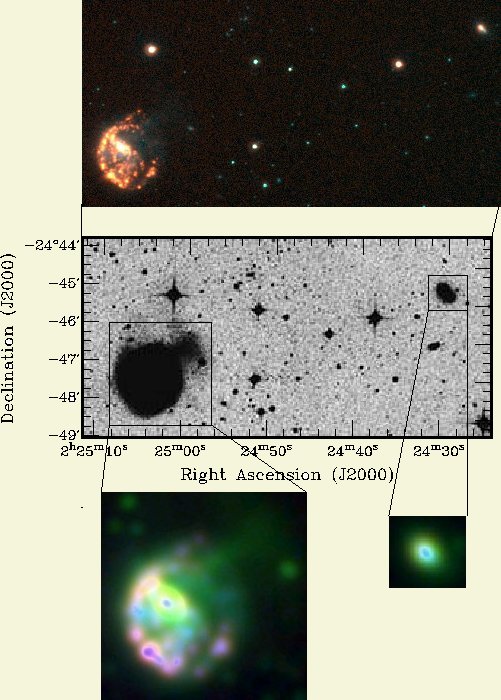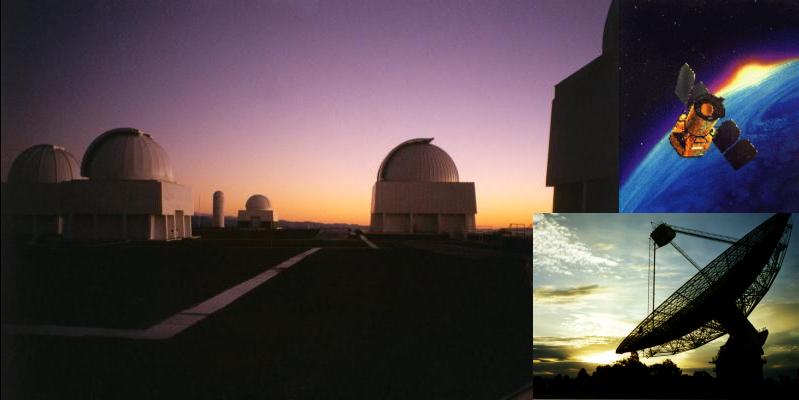Among 110 galaxies observed in the first release of SINGG, NGC922 has the highest H&alpha luminosity. This implies that this fairly modest size galaxy has a star formation rate higher than even some of the larger galaxies in the survey. Tidal interactions and close encounters between galaxies are known to enhance the star formation rates. For example, when one galaxy falls through another galaxy, a shock wave from the encounter (like ripples in a pond) sweeps away the gas and matter. Stars then form when sufficient gas has been gathered at a particular point. A ring of such star-forming regions is a likely result from a simple drop-through encounter. We find NGC922 to be a new drop-through ring galaxy - a nearby and asymmetric version of the famous
Cartwheel Galaxy. NGC922's 'C'-shaped morphology and tidal plume in highly indicative of an off-axis drop-through encounter with its companion. In these observations, we identify S2 to be the companion which was responsible for the ring-like morphology of NGC922. Figure 1 shows the multiwavelength observations of NGC922 & S2. Using numerical simulations, we can reproduce the main observed properties of NGC922 by a high-speed off-axis drop-through collision of a small galaxy with a larger spiral system. Although such collisional systems are relatively rare in the local Universe, recent deep HST studies suggest that they are more common in the early Universe.

Figure 1. The greyscale optical image (middle panel) is a deep image from digitally-stacked plates of NGC922 (bottom-left) and S2 (top-right) courtesy of
David Malin. The top panel is a 3-colour image of the NGC922 field from the optical & narrowband observations of the SINGG survey. The enlarged images of NGC922 and S2 below the greyscale panel are SINGG-SUNGG composite images where red represents the H&alpha, green represents R-band and blue represents the far-ultraviolet. Note the diffuse plume of stars extending from the north-western side of NGC922 towards S2.
Paper
reference: Wong et al. 2006, "NGC922 - a new drop-through ring
galaxy", MNRAS, Volume 370, Issue 4, pp. 1607-1611,
(astro-ph/0605613)


